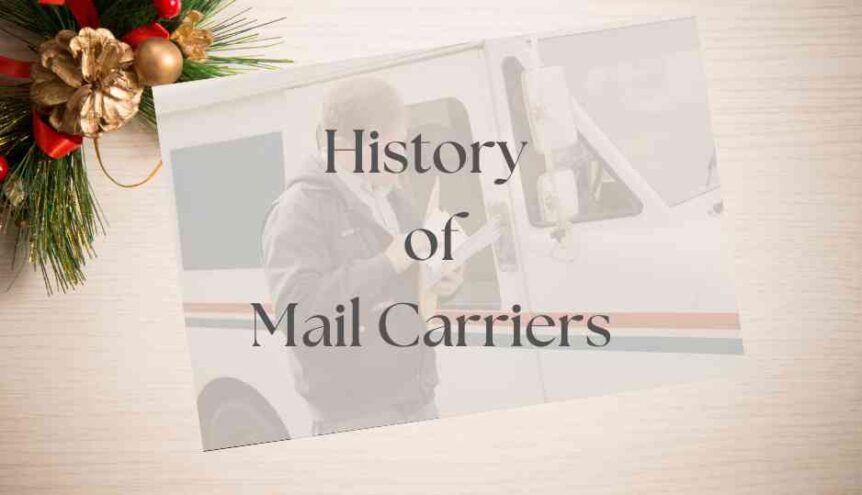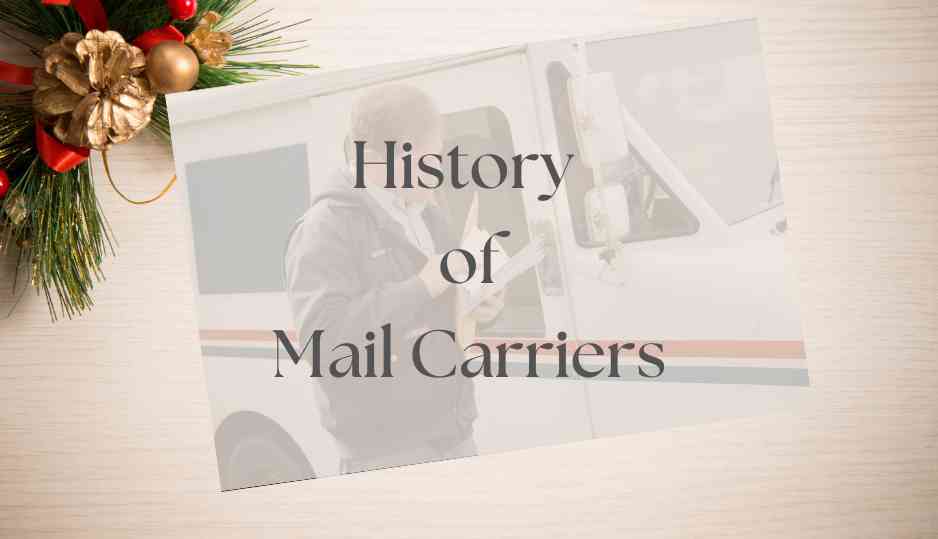History of Mail Carriers
This post may be a stumper for you. Why in the world would I be sharing the history of mail carriers for my Christmas novella release week? Good question. Main character Amelia Hutchinson is a disgruntled mail carrier in A Canine Christmas. Not disgruntled about the job but that it’s not quite as adventurous as she’d like.
Years ago, when I published my Apple Hill Series, I did a post on the Pony Express. Again, it might seem like an odd subject on which to focus, but the setting for that series was historic for more than apple farms—it was on the route for the Pony Express.
I’d forgotten all about writing that article until I started researching for this one. A lot of people are familiar with the Pony Express, but there were many postal delivery steps that proceeded it.
Did you know that Benjamin Franklin was our nation’s first postmaster general back in 1775? If you’re aware of our history at all, you’ll note that this was when the colonists rebelled against Britain—and their Royal Mail, which was the forerunner of the United States Postal Service (USPS).
From that time on, the post office has been on mission to deliver the mail to all Americans. It took a lot of planning to continually reach further and deliver faster to keep up with the growing nation.
It started with horseback riders—or Post Riders, as they were called. They traveled along roads that the Constitution of the United States authorized the federal government to create. The roads connected small post offices, where people would wait in long lines to collect their mail. By 1789, there were 75 post offices and nearly 2500 post roads to serve a population of almost 4 million.
I would have never guessed there were that many people living in America at that time.
By the late 1700s, stagecoaches began to replace individual riders on the roads. Congress urged post offices to grant contracts to stagecoach lines to help link those communities living in the East with the expanding frontier. Imagine how the Gold Rush impacted the expansion of Westward migration in the 1850s. At that point, stagecoaches were traveling along new overland routes that stretched all the way to California.
Earlier in the 1800s, Congress authorized the postmaster to contract with steamboat companies to transport mail—six years after Robert Fulton launched the first steamboat line in New York.
Then we come to the Pony Express. Those who wanted what might be considered Amazon Prime delivery today turned to this short-lived delivery system. It was a private service that began running between St. Joseph, Missouri and California in April 1860.
Pony Express riders rode specifically selected horses (old or lazy need not apply) on average between 75 and a 100 miles a day. Of course, this required them to change horses at relay stations set at 10-15 mile intervals. The nearly 2000-mile route trip took about ten days, which was half the time of regular overland mail.
And I complain about media mail taking its sweet time to get from Tennessee to California at what now seems like a very slow rate of five days.
Although the use of the railroad to deliver mail started in 1832, it didn’t come into its own until after the Civil War with the completion of the first transcontinental railroad. This went on from the 1860s until the 1970s. At its height in the mid-20th century, the Railway Service (aka RMS) handled 93 percent of non-local mail in America.
It wasn’t until 1899 that automobiles were used—they had to be invented first, right? Both electric- and gas-powered cars increased after 1913, and by 1933 only 2 percent of urban postal vehicles were horse-drawn.
Experimentation on mail delivery included motorcycles, but this mode peaked in the 1920s and was replaced by cars and trucks.
Then there was Airmail. The first authorized U.S. Mail flight took place in 1911 with a monoplane between Garden City and Mineola, New York. Scheduled Airmail service officially launched in 1918 using pilots and planes borrowed from the Army.
Did you know that Charles Lindbergh flew the mail between Chicago and St. Louis in 1926—only a year before he made his historic nonstop flight across the Atlantic? In 1924, transcontinental airmail took about one day—10 hours and 20 minutes—compared to the six to seven hours it takes today.
This isn’t an exhaustive account of the history of mail carriers, but it gives you an idea of how it’s progressed over the years. It makes me appreciate how hard our mail carriers work, and how little appreciation they often receive. It was the mail lady we had at our previous house that inspired this particular career for my character Amelia.
For a chance to win a $25 Amazon Gift Card and an ebook version of A Canine Christmas, comment below about a time when you received an important piece of mail—even if it was a gift from Amazon. If you missed Monday’s, Tuesday’s, Wednesday’s, and/or Thursday’s posts, be sure to visit for more chances to win the giveaway.







